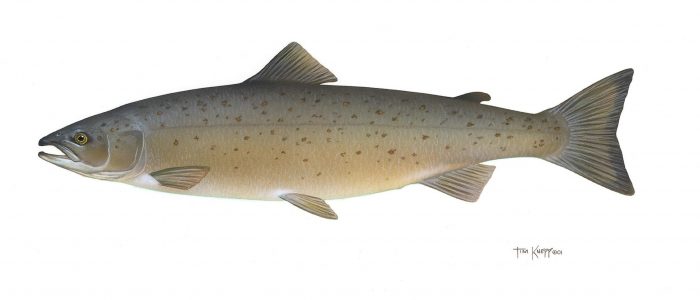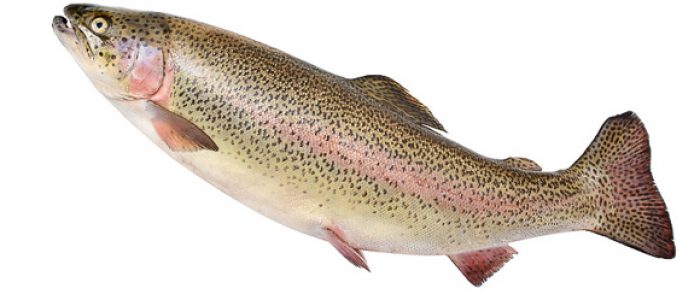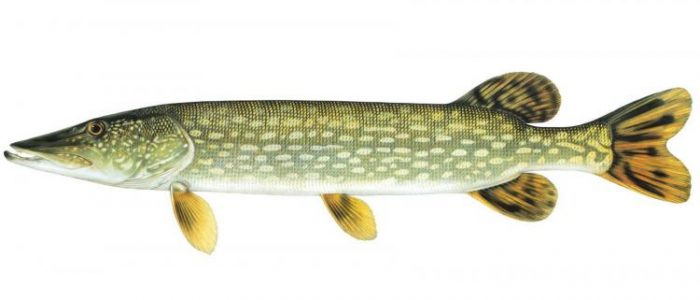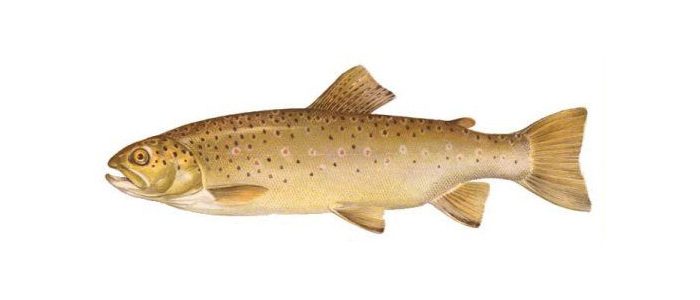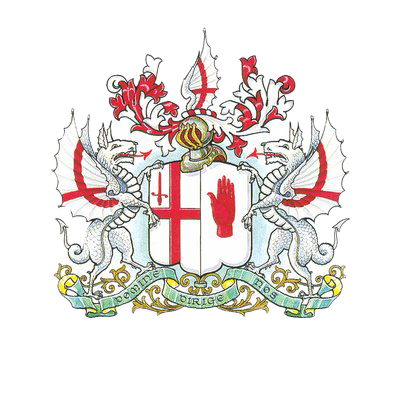Types of
Fish
Besides salmon fishing, we have excellent sea trout, brown trout, coarse and pike fishing in our rivers.
Salmon
…..
Sea Trout
Sea trout are found in many of the rivers in which the Irish Society owns fishing rights, particularly in the lower reaches closer to the sea, especially in the Lower Bann estuary and its small tributaries. However, they are not unknown in the higher reaches, as far up as Carnroe. Because of their unique migratory habit the estuary is where much of the angling takes place and these fish which are also known as finnock are targeted as they return to fresh water from the ocean between June and August mainly. Due to fish stock concerns, as with salmon, sea trout are protected in much of Northern Ireland’s waters and must be returned alive to the water on the Bann system. The Bann Permit is a good way to obtain access to sea trout fishing and these are available from tackle shops shown elsewhere on this site.
Pike
Parts of the Lower Bann river are particularly good for coarse and pike anglers, owing to the river’s deep sluggish flow in much of its upper reaches and around the large shallow area of Lough Beg.
For coarse anglers, the main competition-standard stretch is on the Derry bank just above Portglenone, which hosted the 2019 European coarse angling championship. There are also designated coarse stretches below the Agivey Bridge near Ballymoney, at Movanagher Forest on the Derry bank below Kilrea and some easily accessible stands just outside Portneal Lodge at Kilrea Bridge.
For pike fishermen, the most popular area has to be Lough Beg, a large shallow body of water just north of Lough Neagh, through which the Lower Bann flows. Many large specimen fish have been caught here over the years. All coarse fish must be returned alive and unharmed to the water after capture. A daily licence and a Lower Bann permit are required to fish in any of the following stretches. Permits may be purchased at a number of tackle shops or online. See here for a list of tackle shops and how to purchase a permit online.
Details of the best coarse and pike angling areas are below:
Portglenone Forest – Newferry : Located in a beautiful wooded area of the Lower Bann, this facility was created in 1992 and enlarged in 2019 to accommodate 130 pegs to cater for increasing numbers of coarse anglers. Access was improved by the creation of a road leading to the river, car park and over one mile of pathway along the bank. Good fishing is available at this site all year round, although it can slow down at spawning time, with the main species being Hybrids, Roach, Skimmers and Bream. At Ulster Coarse Fishing Federation and International events, average bags are between 5-15 kilos, although this can be far exceeded during the pleasure sessions, when 40kg bags are not uncommon. The pole/feeder are considered most suitable during the winter months and the slider during the summer. In addition to the coarse angling, some good Pike also frequent the area.
Agivey Bridge : The banks of the Lower Bann at the Agivey Bridge are very angler friendly. The river gains speed after the Agivey confluence and produces good bags of Bream and Hybrids which tend to be in the 4lbs to 7lbs+ range and are renowned for their fighting quality. The beat also has good shoals of Skimmers and Roach with many specimen fish reported each year. Predatory Pike and Perch are never far from the shoals of fish holding in this area. Coarse fishing inside the Agivey river entrance is not allowed.
Movanagher West : Situated about two miles from the town of Kilrea, just off the A54 road to Coleraine, and on the west bank of the Lower Bann, Movanagher West is a beautiful setting for 79 fishing pegs. Access can be difficult, with a 200-300m walk from the lay-by to the pegs. The fishing here is variable, but shoals of Bream, Roach and Hybrids are all common. Perch, Pike and Eel are also present. The maggot and caster are recommended in particular. However, this is mainly a summer venture as high water levels can make access to the pegs difficult.
Portneal Lodge : The prolific stretch lies upstream of the Bann Bridge, Kilrea, and is conveniently adjacent to Portneal Lodge. There are a number of custom built pegs here and access to the river is straightforward, with the fishing being highly recommended. The main species available here are Hybrids, Roach and Bream. Fishing can be slow here during the summer, but autumn and winter sessions provide good sport.
Hutchinson’s Quay : This section of the Lower Bann is quite often overlooked by anglers. It is situated in the most beautiful surroundings, with straightforward access, allowing wheelchair bound anglers to reach the fishing with ease. However, there are no custom built pegs. Anglers may fish from the jetty on the site, the deep water alongside being most suited to pole or feeder fishing. In this area Roach and Perch are the main quarry, being found in good numbers when the river is in flood during the autumn.
Lough Beg : The Lough Beg area can provide excellent Pike fishing, having a sluggish flow and some shallow bays. Pike are also found in the deeper navigational channel running through the Lough. Access to Lough Beg is most convenient by boat from Newferry or Toome.
Brown Trout
Native brown trout abound in all the rivers of the Lower Bann and Foyle catchments. Movanagher beat on the Lower Bann is particularly well-known for its large Bann trout, and the unique dollaghan trout of Lough Neagh are found in the Moyola and Ballinderry rivers. The tributary rivers of the Lower Bann (Agivey, Clady, Ballymoney and Macosquin) provide excellent fly fishing sport for anglers at very reasonable prices.
